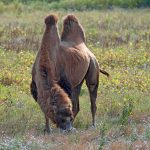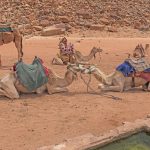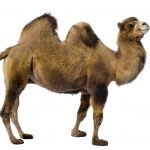Camels have humps: either 1 or 2 humps in fact – depending on which camel breed they are. There are three types of camels: 1 has 1 hump (Dromedary) and 2 have 2 humps. (Bactrian and Wild Bactrian).
How Many Humps Does A Camel Have?
Modern camels (technically camelids) come in three forms – and all three are found in the New World. The most numerous species is the Dromedary (Camelus dromedarius) found across Africa and Arabia as well as in small pockets across the globe including, strangely and most famously, Australia.
These camelids have just the one hump – and are thought to have ‘lost’ their second hump after splitting from, and becoming more successful than, their ancestors: the Bactrians.
The two much rarer species of camelids are both Bactrian camels. The domestic Bactrian (Camelus bactrianus) and the Wild Bactrian (Camelus ferus) both bear two humps and are much bulkier than the, rather lithe in comparison, Dromedary. These two species also have very thick fur and are more able to survive in higher, colder, and drier climates.
The closest relatives of the camels – and also camelids themselves – are the llamas and alpacas of South America. They evolved from the same proto-camel ancestor (a small hump-less mammal the size of a large hare) way back in prehistory – found living in South Dakota. Protolopus was very llama-like in shape – but only a fraction of the size.
What Are The Different Camels Called?
As a sub-group of camelids – the New World group are often just referred to as ‘camels’ – and as described above there are three main species found outside of the Americas.
The ancestors of these camels left North America across the Bering Strait and moved through northern Eurasia.
As they migrated, the two Bactrian Camel groups split apart first – and then the Dromedaries split off from one of these groups much more recently. As it moved into the hotter climates of Asia, Arabia and North Africa – it lost a hump – and most of its hair.
Dromedary:
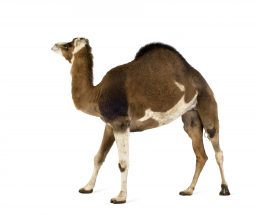
This smaller and much more lithe camel is more common than the other two species. It is estimated that as a percentage of the three that between 90-94% of all camels are Dromedaries – and they are all domesticated animals (or feral). The ancestor of the Dromedary camel has long since gone extinct, leaving only the domesticated version alive today.
From Senegal to Somalia; and from Morocco to southwest China – these one-humped camels are the perfect pack animal for travelers in the deserts and rocky landscapes the area is known for. Able to walk for days at a time without eating or drinking – as well as walking in the heat of the day without needing a break – these have been some of the most successful and life-saving domestications.
Bactrian:
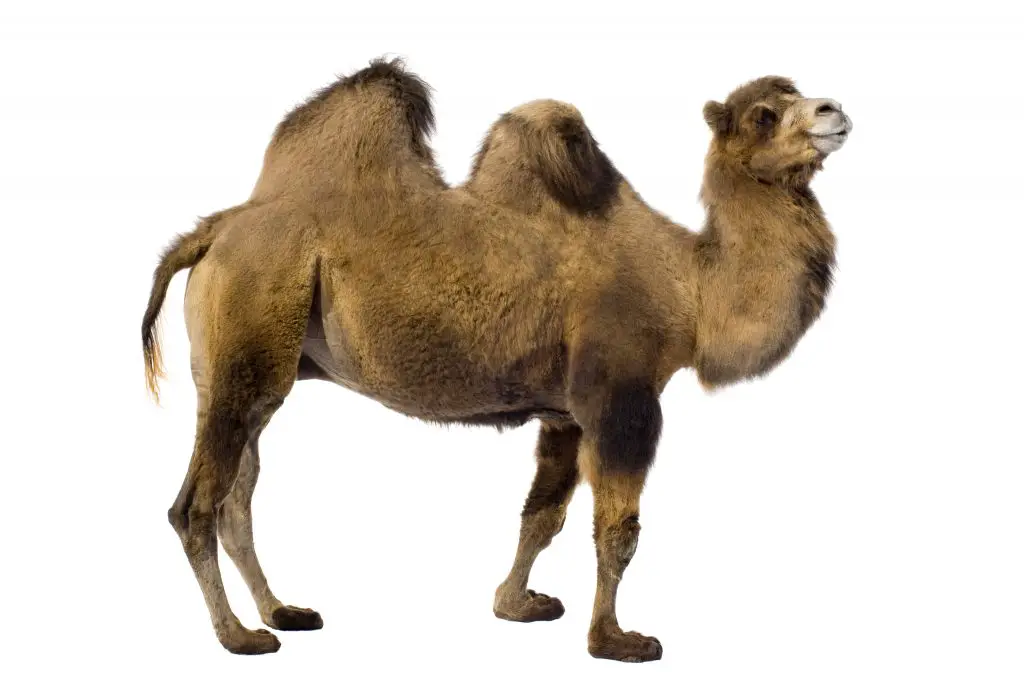
The largest camelid of all is the domesticated Bactrian camel – weighing up to a tonne (1000kg) in weight. These incredibly hairy camels have a huge number of adaptations to keep them healthy and active even in the coldest and most hostile of environments.
Retaining many of the survival features from their Ice Age ancestors – they were the perfect livestock along the Silk Road for thousands of years, and still do amazingly well in the mountains of central Asia today.
Wild Bactrian:
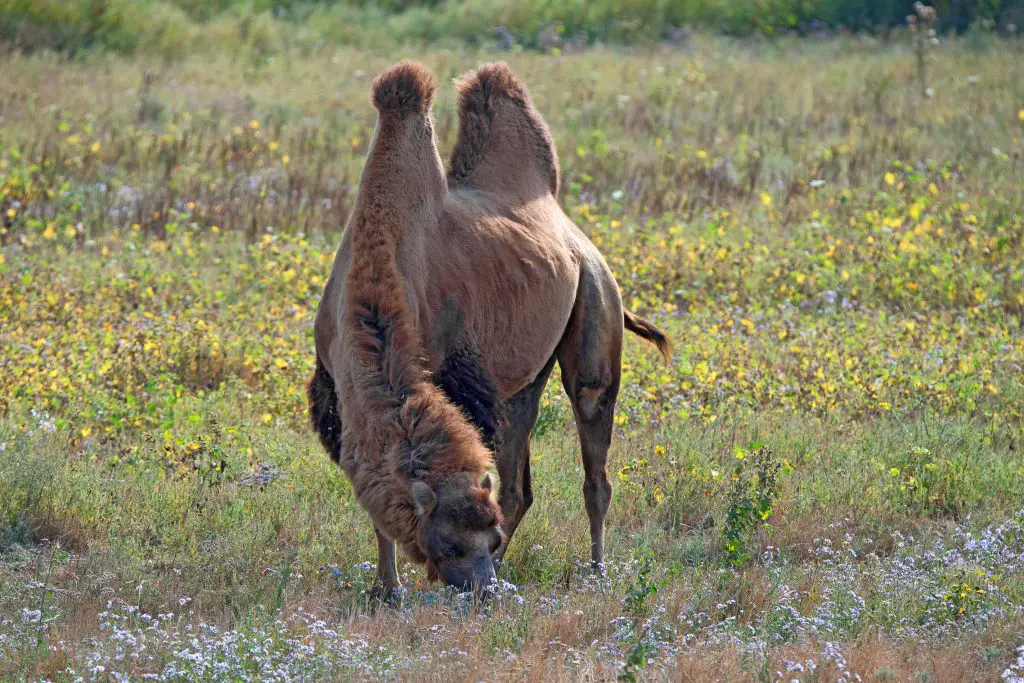
A close family member – but not the originator – of the domestic Bactrian camel – they live now only in tiny pockets of their former range. This non-domestic species are incredibly rare and listed by the IUCN as Critically Endangered.
Two-humped and huge – these camels are protected in their current (but extremely limited) habitat. They retain some amazing survival adaptations – but it isn’t enough. They are decreasing in numbers with their main threat being human conflict.
What is Stored in Each Hump of a Camel?
The camels’ hump contents are primarily composed of fat. These swellings act as reserves, helping the desert-dwelling creatures survive in harsh environments with limited food and water. Contrary to common belief, it is not solely water that is stored in the humps. The stored fat acts as a source of energy, enabling camels to endure long journeys without food and water, making them well-adapted to arid regions.
Do Camels Store Water In Their Hump?
Although that really would seem like a good idea for a desert-dwelling species – they already store water in their blood system – so don’t need to use the hump for that purpose. Instead, they store all their body fat in their hump rather than around their body.
Storing their fat all up on their back allows them to not only stay cooler (as they don’t need an insulating layer) but also allows them to control its use much more efficiently. Only burning off the fat when they need to use the energy, they can survive in habitats where boom and bust would cause illness and death in other mammals.
Going without food or water for a month or more would be fatal for most animals – but camels just take it in their (very long) stride.
The easy way to say it is. There are three spicies of camels: 1 has 1 hump (Dromedary) and 2 have 2 humps. (Bactrian and Wild Bactrian).

